Home![]() books
books
![]() ecology
ecology![]() Latest info
Latest info![]() from space
from space
![]() Encyclopedia
Encyclopedia![]() Animals
Animals![]() Plants
Plants![]() Climat
Climat![]() Research
Research![]() The world beneath Baikal
The world beneath Baikal![]() Geology
Geology![]() Circumbaikal railroad
Circumbaikal railroad![]() Photogallery # 1
Photogallery # 1![]() Photogallery # 2
Photogallery # 2![]() Photogallery # 3
Photogallery # 3![]() Listvyanka
Listvyanka![]() Natives
Natives![]() In German
In German![]() Word of poet
Word of poet![]() Olkhon island
Olkhon island![]() Earthwatch
Earthwatch
![]() Shopping
Shopping![]() Travel agences
Travel agences![]() Guestbook
Guestbook
![]()
 Lake Baikal is a surprising and unique natural laboratory
where one can study the life in abyssal fresh waters. New varieties and species
of organisms are continuously developing in the lake. Throughout its history
both Baikal itself and the organisms inhabiting its world have undergone a
complicated evolution. Because of this, the lake is inhabited both by very
ancient varieties of organisms that originated in small lake pre-dating Baikal
and younger ones that originated in Baikal itself. There are more than 300
species of protozoans and about the same number of the most interesting amphipod
crustaceans, various flat and round worms, lower crustaceans, insects, mollusks,
fish, and the nerpa (seal).
Lake Baikal is a surprising and unique natural laboratory
where one can study the life in abyssal fresh waters. New varieties and species
of organisms are continuously developing in the lake. Throughout its history
both Baikal itself and the organisms inhabiting its world have undergone a
complicated evolution. Because of this, the lake is inhabited both by very
ancient varieties of organisms that originated in small lake pre-dating Baikal
and younger ones that originated in Baikal itself. There are more than 300
species of protozoans and about the same number of the most interesting amphipod
crustaceans, various flat and round worms, lower crustaceans, insects, mollusks,
fish, and the nerpa (seal).
![]() Baikal
nerpas streaming RealVideo
Baikal
nerpas streaming RealVideo
 Baikal
has more than 1,000 species of aquatic flora! Besides the algae, about 20
species of flowering plants have been found here. The lake's bays and silty
lagoons, its sheltered coves, and the river deltas harbour such plants as
rhdest, thin reed, water buckwheat, cattail, hornwort, and sedge.
Baikal
has more than 1,000 species of aquatic flora! Besides the algae, about 20
species of flowering plants have been found here. The lake's bays and silty
lagoons, its sheltered coves, and the river deltas harbour such plants as
rhdest, thin reed, water buckwheat, cattail, hornwort, and sedge.
Near the steep shores of Baikal, the coastal areas of the deep-water slope are devoid of flowering plants. Yet there are algae living there. If you look carefully at the stones along the surf line in July, August and September, you can see a thick green moss-like plant - the ulokrix, on them. A little bit deeper the stones are covered with yellowish fibers of algae called the didimosphenia, and still deeper (3-10 metres) you'll see small bushes of the Baikal draparnaldias that once formed dark-green thickets. Other algae is visible at this depth as well.
Exceptionally rich and diversified is the phytoplankton - tiny algae that mostly inhabits the upper layer of water where it receives the most light. These are diatom peredinial golden algae. Many species of these algae grow intensively in early spring when the lake is still covered with a layer of ice. Among these are also the cold-loving diatom algae: the melizira, the cyctotella, the cinedra. Especially plentiful under patches of transparent ice is the gymnodium, a light-and cold-loving peredinial algae.
In summer when the water warms up, the cold-loving algae give way too more heat-loving varieties - green, blue-green, golden, and some other species of diatom algae. The number of algae in Baikal varies, depending on the season.
The biological role of bacteria in Baikal is no less diverse. They decompose and mineralize dead plants and animals, thus participating in purification of the water. The bacteria also provide food for some plankton, crustaceans, and other organisms.
Among the smallest organisms inhabiting Baikal are the protozoa unicellular organisms: the infusoria, the rhizopods, the flagellums, and the sporoforms. In no other lake are the infuzoria of such great importance in the life of the organisms inhabiting the water's depths. Certain infuzoria species are found even at a depth of 600 metres! Some infuzoria live in water on their own (84 species). Others live parasitically or cohabitate in mollusks' mantle cavities. But all the protozoa serve as food for more highly organised forms.
In summer, when the water surface is quiet, one can see through the water vast thickets of bright- and dark-green fresh-water sponges of various shapes, each with a unique form.
All the Baikal sponges live on stony ground in open open areas of the lake. Research studies by the Pisces, a deep-water apparatus, show that they live at depths reaching 1,000 metres. The Baikal sturgeon uses the sponge as food.
Among the great variety of worms inhabiting Baikal, the unusual flat ciliary worms (turbilaria in Latin) are plentiful. Such worms, along with the sponges that live in the vicinity of the Frolikha Hot Springs, contain about 60 per cent ancient carbon. This Baikal turbilaria display wide variations in color and size. They have bright patterns of various hues, and can reach the size of about 30 centimetres long and 4-5 centimetres wide, when spread out. All these worms are endemic; they solely inhabit the open parts of Baikal.
The Baikal worms feed along the lake's bottom, where they search for a victim, paralyse it, then envelop it in mucus and draw it slowly inside the body. By feeding on sick and weakened organisms, the flatworms function as medical orderlies.
Under stones on the clay and, to a lesser extent, the sandy areas of the lake's floor, from the surface level to the deepest water, live scare-setaceous worms - the oligochets. This group of worms accounts for no less than 70 species, 90 per cent of which are endemic and live in the open waters of Baikal.
Among the benthic inhabitants, the oligochets take leading positions. A small part of the oligichets are rapacious; the major part of them are detrivorous. Normally, they serve as food supply for other more highly organised animals. The scare-setaceous worms play a rather significant part in the lake's biological processes. I. Izosimov believes that the oligichets are the relict of the tertiary fauna that formed long ago and become endemic, while Baikal has given rise to a number of new species with their specific accommodative features enabling them to live in this great reservoir.
Apart from the scare-setaceous species, the lake harbours a curious representative of the multi-setaceous worms - the policheta maasayunkia baikalica. It lives in small tubes built of silt and sand particles, fastened together with a specific substance. This typical representative of the sea or freshened reservoirs live on coastal silty grounds, in sponge foramens, on plant branches, and in other places. It is still not clear how it got into Baikal, but there are several interesting suppositions on that score.
More than a hundred species of mollusks are known to live in Baikal. They live on silty or sandy ground, mostly at a depth of 15-20 metres. Mollusks are infrequent at depths between 20 and 30 metres, and only sparse single mollusc specimens live at depths of 100-150 metres. They are small and have thin-walled shells due to the cold water and lack of calcium salts. The mollusk provides good food for the sturgeon, the sig, the grayling, the bullhead, and the eel-pout.
Almost all Baikal mollusks belong to the basic families of Baikal; they are found in their fossil forms in the lake's deposits that score million years old. Of specific interest is the endemic family of the baikaliids of various shapes and shell sizes, decorated capriciously with ribs, keel, knobs and fine spiral nets.
In early summer, the end of May-June, rucheiniks, insects hatched in streams, start flying out in full force. These insects, which are also known as "metlyak" in the south of Baikal and "lipochan" in the north, fill the air near the shores, and gather in thick masses on the cliffs, stones and trees, and by the water's brim. Their adult phase lasts a few days. After laying their eggs in the water, the adult insects die. Their larvae turn into chrysalises and, in spring, they develop wings.
Because of the hatching rucheiniks, bears hurry to the shore every spring, singly or in family groups, to feast on the insects. At the same time graylings and omuls 'haul' alongside the shores - this kind of food is extremely nourishing! Among other insects, the chironomides are numerous, accounting for about 60 species, but only one third of them live in open Baikal.
The most numerous inhabitant of the lake's water is a copepodae crustocean - the Baikal epischura. It is about the size of a manna-croup grain; a size of 1.5 millimetres is 'gigantic' for it. However, it is this crustacean of the Crustacea species that account for 96 per cent of the Baikal zooplankton. The epischura plays an exceptional part in Baikal's life circle. This crustacean is a main consumer of the plankton algae, and it subjects the lake's bacteria to thorough filtration. Without any exaggeration, one can say that the epischura is the major filter of Baikal. According to academician G. Galazy, a well-known scientist (Lake Baikal, 1979), "throughout the year all crustaceans of this species filter from 500 to 1,000 cubic kilometres of the Baikal water or more, which is 10-15 times more the annual in-flow of water from all tributaries." The epischura lives only in cold clean water with a constant chemical composition and high saturation with oxygen.
The development of the crustacea in Baikal is most extraordinaryl, especially the amphipods that account for about 300 species in the lake (a third of all the gammarids known in the world!). Mostly they live on the bottom, where they can bury themselves in the ground, hide under the stones, crawl on the bottom, and place themselves cosily on the Baikal sponges, feeding at their expense. In shallow water they are distinguished by their bright colours and good eye-sight; at great depths they are colourless, blind, and have long antennae by means of which they search for food on the ground.
A major part of the amphipods are predators - cadaver-eaters. They devour the invertebrates, dead fish, and other organisms. Sometimes fisherman, if they fail to check their nets in time, lift up either "minced" fish or skeletons devoid of any flesh. The amphipods are remarkable medical orderlies, as well as serving as food for fish.
Among the amphipods, a special place belongs to a pelagic (living in the depth of water) crustacean - the macrogektopus, or the yur, as fishermen call it. The yur is one of the main food components for the omul, and also provides food for all fish species. The macrogektopus is a typical inhabitant of open Baikal. During daylight hours its main mass keeps close to the most active 200-250 metre thick upper layer of water. At night it moves through the surface layers hunting small plankton organisms.
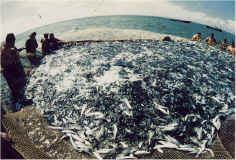 There
are 56 species of fish inhabiting Lake Baikal. The majority of them are
bullheads - the shirokolobka ('wide forehead', as they are called locally).
These developed in Baikal from an ancient form akin to the Anadyr and Michigan
bullheads; they are represented in Baikal by 32 species, 29 of which are
endemic. For the most part, the bullheads are typical inhabitants of the
bottom, occupying all water depths.
There
are 56 species of fish inhabiting Lake Baikal. The majority of them are
bullheads - the shirokolobka ('wide forehead', as they are called locally).
These developed in Baikal from an ancient form akin to the Anadyr and Michigan
bullheads; they are represented in Baikal by 32 species, 29 of which are
endemic. For the most part, the bullheads are typical inhabitants of the
bottom, occupying all water depths.
Baikal is also home to the world's most abyssal freshwater fish. These fish have managed to preserve eyesight even at the greatest depths, although they see only in black and white.
Two species of bullheads, the yellow-fin and the black-crest, inhabit the water depths. These pelagic forms live in the upper 100 metre-thick layer, feeding on the epischura and the yur. The pelagic bullheads' fry (young), especially those of the yellow-fin bullheads, the so-called poyed (glad meal), comprise one of the food components for the omul.
Possibly, the Baikal's most interesting fish is the golomyanka (oil fish), which is still mysterious in many aspects. The golomyankas - the big and the small species - live only in Baikal. Their size does not exceed 24 centimetres, they have no scales, and they are nacreous (mother-of-pearl) in colour and transparent. They contain up to 35 per cent of medicinal oil rich in vitamin A. The golomyanka is the most numerous fish in Baikal, its resources amounting to about 150 thousand tons. However, in neither of its life stages does it swim in schools, so it is not included in the food-fish list. Old residents say that a long time ago, after storms, golomyankas were gathered alongside the shores and the fat was melted and used in treatments for rheumatism, atherosclerosis and for healing wounds that would not scab over for long. The golomyanka is a viviparous fish, the only one in our latitudes. It gives birth to 3,000 living fry at a time. Most females perish after the child-hearing. Rarely, the golomyanka gives posterity twice, and even more rarely, three times. In the nature golomyankas live no more than 6 years.
This small fish can endure most pressure in the depths of the Baikal water. At night it rises to the water surface, and at daytime it swims down to great depths. Limnologists have had a chance to observe the golomynka's behaviour in the water depths. At a depth of 1,000-1,400 metres and more, the golomyanka moves freely both horizontally and vertically, whereas at such a depth even a cannon cannot shoot because of the enormous pressure.
It is noted that the golomyanka is very sensitive to the temperature of water. Its optimal temperature is up to +5°C, and it avoids higher temperatures. It cannot survive at +10°C or higher.
The major food-fish in Baikal is the omul. When it comes to tenderness and gustatory qualities of meat, the omul knows no rivals. There are five populations of the omul: the selenginsky, the chivyrkuysky, the posolsky, the north-baikalsky, and the barguzinsky.
![]() Brown
bears at lake Baikal shores in spring
Brown
bears at lake Baikal shores in spring
In autumn, during the spawning season, each population moves into its own river. The instinct of continuation of generation forces the omul to overcome turbulent rapids and river shoals. The caviar is left on the sandy and pebbly bottoms with moderate water flow, and the development of its larvae lasts 8 months. For a variety of reasons, a greater part of the caviar perishes: it is either buried under sand and silt or eaten by predators. To help maintain the population, fish-breeding plants have been constructed on Baikal where valuable food-fish are grown under artificial conditions.
 |
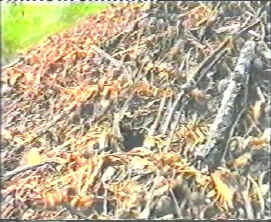 |
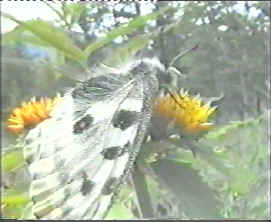 |
 |
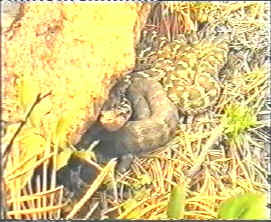 |
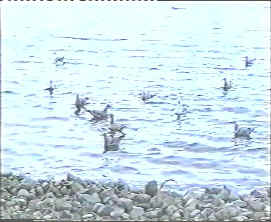 |
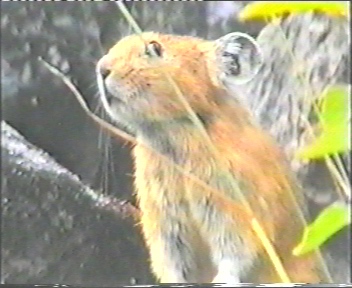 |
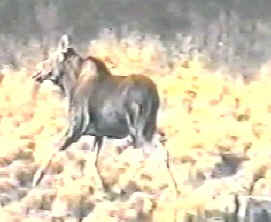 |
At the breeding plants, 80 per cent of larvae from caviar survive, but, when thrown down into Baikal, they become exposed to many dangers. Only one fry in a hundred survives to return to the spawning site. By the standards of ichthyology, this is a normal per cent! Admiral Nelson once remarked that "three cods would be enough to feed London if their generation could be preserved..."
All the omuls are known to belong to three ecologoic-morphological groups: benthos-abyssal, pelagic and coastal. The omul's resources are determined by fishery intensity. It should be noted that large-scale fishery is decreasing gradually, while there is an increase of licensed amateur fishery. It is noteworthy that today, in the settlements on Baikal's shores, the local people can offer you salted and smoked omul, still hot, cooked before your eyes.
Even better-tasting than the omul is the Baikal lake sig, a sappy, fat fish weighing up to 12 pounds and more. The black and the white Baikal graylings offer splendid sport-fishing. After the ice breaks up in the spring, the black Baikal grayling, a surprisingly graceful fish with a high spinal fin and sparkling rainbow colours, moves up into the rivers falling into Baikal. It overcomes the rapids and zaioms (wood-piles stuck in a river) up to a metre high to spawn. Seventeen days later the caviar gives life to the larvae that roll backwards into Baikal. The black grayling lives both in the lake's quiet waters and swift mountain rivers.
 |
 |
There are taimens and lenoks living in Baikal, but a special place in the lake's ichthio-fauna is taken by the Baikal sturgeon, which largely inhabit the areas of the Baikal's major tributaries: the delta zone of the Selenga River, Proval Gap, Chivyrkuy and Barguzin Bays. The sturgeons migrate widely throughout the whole lake, especially along the coastline, where they swim into bays and coves. At one time, the sturgeons caught weighed about 250 pounds. However, they grow slowly and mature late. The males come in spawning schools at the age of 15-28 years, the females - at the age of 21-37 years.
In Baikal there are perches, daces, ides, crucians, roaches, eel-pouts, and other fish that are widespread throughout Siberia. These inhabit the lake's tributaries, shallow bays and silty inlets.
In the 1940s, the Amur carp was acclimatised to the lake, the eastern bream is making now itself at home here, and the Amur sheat-fish has penetrated into the lake through the Khilok- Selenga river system.
The Baikal seal, or the nerpa as it is more often called, has always been of great interest. How does this animal come to inhabit Baikal, since its nearest relatives live in the northern arctic regions and southern Caspian Sea? One theory holds that the seal came into Baikal from the Arctic Ocean through the Lena River in prehistoric times, when it was part of an integral system with the Baikal. This theory finds support in he fact that chromasomic analyses and other data favour of the arctic-sea seal as its closest relation. However, there are many differences between the nerpas and related seals. The Baikal seals are more graceful, especially the females. They also differ from others by the silver- grey colour of their skin, and the fact that they have 2 more litres of blood, which enables them to do without fresh air for almost 70 minutes.
According to the observations of workers at the Limnological Institute, the nerpa is able to dive to a depth of almost 300 metres. While diving, its metabolic processes cease, and it shifts over, due to myoglobin, to intro-visceral breathing, while the blood vein walls get rid of cholesterine. Its population, according to information gained by researchers E. Petrov and M. Ivanov, is no less than 100,000 animals. Yet, two centuries ago Peter Simon Pallas wrote sorrowfully that "through spears and swords Baikal has been damaged irreparably, and the nerpas are not to be seen already in the South Baikal..."
In winter time, when the lake is covered by the thick layer of ice, the seal makes breath-throughs (holes in the ice) with its sharp claws. Nearby, in a snowy den, the cow gives birth to one or, rarely, to two seal-calves. At first, they are of yellow-green colour. Two weeks later they turn white, and later they acquire a noble silver-grey tint.
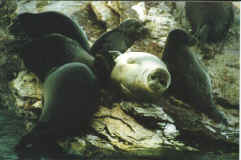 The
nerpa feeds on fish that are not significant in fishery, but are important
for the Baikal's ecosystem (bull- heads comprising 20 per cent and golomyanka
80 per cent of its food ration). Each day it consumes no less than 3 kilograms
of fish (a ton annually!). No words can describe the feeling that is left
after meeting a living nerpa somewhere in a quiet bay or near Ushkany Islands.
The trustful, open look of the seal's big clever eyes will charm everyone.
For hours the animals can bask in the sun playing with their kin.
The
nerpa feeds on fish that are not significant in fishery, but are important
for the Baikal's ecosystem (bull- heads comprising 20 per cent and golomyanka
80 per cent of its food ration). Each day it consumes no less than 3 kilograms
of fish (a ton annually!). No words can describe the feeling that is left
after meeting a living nerpa somewhere in a quiet bay or near Ushkany Islands.
The trustful, open look of the seal's big clever eyes will charm everyone.
For hours the animals can bask in the sun playing with their kin.
Home![]() Books
Books ![]() Ecology
Ecology![]() Latest
info
Latest
info
![]() from
space
from
space ![]() Encyclopedia
Encyclopedia
![]() Animals
Animals![]() Plants
Plants![]() Climat
Climat![]() Research
Research![]() The world beneath Baikal
The world beneath Baikal![]() Geology
Geology![]() Circumbaikal railroad
Circumbaikal railroad![]() Photogallery # 1
Photogallery # 1![]() Photogallery # 2
Photogallery # 2![]() Photogallery # 3
Photogallery # 3![]() Listvyanka
Listvyanka![]() Natives
Natives![]() In German
In German![]() Word of poet
Word of poet![]() Olkhon island
Olkhon island
![]() Earthwatch
Earthwatch
![]() Shopping
Shopping![]() Travel agences
Travel agences![]() Guestbook
Guestbook
realvideo
![]() Transsiberian
railway.
Transsiberian
railway.![]() Inside
the train at Transsiberian railway,download .mov 468kb
Inside
the train at Transsiberian railway,download .mov 468kb![]() Circumbaikal
railway
Circumbaikal
railway![]() Lake
Baikal beauty
Lake
Baikal beauty![]() Yachts
at Baikal
Yachts
at Baikal![]() Brown
bears at lake Baikal shores in spring
Brown
bears at lake Baikal shores in spring![]() Aqualangist
under Baikal ice
Aqualangist
under Baikal ice![]() At
lake Baikal beneath
At
lake Baikal beneath![]() Baikal
nerpas
Baikal
nerpas![]() History
of Trans-Siberian
railway
History
of Trans-Siberian
railway
![]()
|
|
|